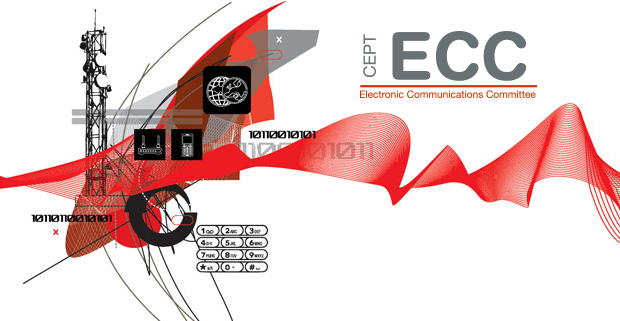WRC-19: The agenda for future Conferences
With the ink still not dry on the final acts of WRC-19, attention has already turned to the agenda for the next conference, write Doriana Guiducci and Peter Faris
Delegates at the ITU World Radiocommunication Conference (WRC-19) have agreed the agenda of the next Conference in 2023, as well as the preliminary agenda for 2027. The agenda for WRC-23 sets the roadmap for important future technological developments, which will be addressed by both the ITU-R study groups and at regional level in the upcoming four years. CEPT will prepare for the next WRC within its Conference Preparatory Group (CPG), which is due to start work in the first half of 2020.
The proposals
WRC-19 considered 85 proposals for future agenda items, including 20 CEPT proposals, covering a wide range of topics. Recommendations for the preliminary WRC-23 agenda agreed during WRC-15 were also taken into account. During the discussions some proposals on similar topics were merged into proposed single agenda items. However, it was not possible to include all proposed topics on the agenda for WRC-23 due to the workload this would entail for administrations and the ITU-R study groups during the preparatory process. As a compromise, several items were instead agreed for possible consideration at the following WRC in 2027.
The agreed WRC-23 agenda includes 19 agenda items, which will be studied over the next four years. 13 of them originate at least partially from CEPT proposals.
Mobile and broadband communications
Additional frequency bands will be considered for mobile usage, including 5G. These will be mainly studied on a regional basis in several bands between 3300 MHz and 10.5 GHz. However, a possible global harmonisation in 7025-7125 MHz will also be considered. The relevant bands for the CEPT region are 3300-3400 MHz, 3600-3800 GHz and 6425-7025 MHz. The 3600-3800 GHz band is already harmonised for 5G usage in CEPT through ECC Decision (11)06.
One topic that was the subject of significant discussion at WRC-19 was the existing conditions for the band 4800-4990 MHz in certain countries. This will be reviewed in 2023. In addition, the possible usage of high altitude platform stations (HAPS) as base stations – to provide mobile coverage in existing mobile bands below 2.7 GHz – will be considered.
ITU Region 1 covers Europe, the Middle East and Africa. The use of the 470-960 MHz band in this region will be reviewed to identify possible regulatory actions based on the use and future needs of broadcasting and mobile services. This will be a high-profile agenda item at WRC-23 due to the importance of spectrum in this range to provide widespread coverage.
Aeronautical communications
Several new agenda items address aeronautical issues. The existing conditions for control of drones using satellite networks will be reviewed. Also to be considered are potential new allocations for the aeronautical mobile service in various ranges between 15.4 GHz and 22.5 GHz – to accommodate new non-safety applications. A new allocation for the aeronautical mobile-satellite (route) service will be considered in the range 117.975-137 MHz. The existing regulatory provisions for aeronautical mobile (route) service in the range 2.85-22 MHz will be reviewed to accommodate digital technologies for commercial aviation safety-of-life systems.
Satellite communications
In the satellite sector there are two new agenda items addressing satellite earth stations in motion (ESIM) in different bands. The frequency range 12.75-13.25 GHz will be studied specifically for aero and maritime usage with geostationary (GSO) networks. Bands between 17.7 GHz and 30 GHz will be studied for all categories of usage with non-geostationary (NGSO) systems. This will complement the work done in these bands for GSO networks at both WRC-15 and WRC-19.
WRC-23 will consider possible new allocations for mobile-satellite service for future satellite-based IoT applications. It will consider them for several frequency bands, between 1685 MHz and 3400 MHz on a regional basis, including in 2010-2025 MHz within Region 1. Possible new allocations for inter-satellite links will be considered in several frequency bands between 11.7 GHz and 30 GHz. A new fixed-satellite service allocation in the space-to-Earth direction will be considered in 17.3-17.7 GHz in ITU Region 2 – the Americas. This band is already available in Europe.
Science communications
Agenda items related to the scientific sector will consider a possible new secondary earth exploration-satellite service (EESS) allocation – for active EESS – within a range of frequencies around 45 MHz for space-borne radar sounders; a possible upgrade of the space research allocation in 14.8-15.35 GHz, and possible adjustments to passive EESS allocations in 231.5-252 GHz.
Regulatory provisions for sub-orbital vehicles will be considered further, following the agreement for no change on this issue at WRC-19. The studies will consider how sub-orbital vehicles should be categorised, their spectrum needs, and whether additional spectrum may be needed beyond WRC-23.
Maritime communication
In the maritime sector, the work on the Global Maritime Distress and Safety System (GMDSS) at WRC-19 will be continued with a new agenda item on modernisation of GMDSS and the implementation of e-navigation.
Regulations
In addition to the agenda items which propose studies towards review of frequency allocations, WRC-23 will address the possible revision of satellite regulatory procedures and will study issues for other possible regulatory actions. These include: consideration of spectrum requirements for space weather sensors; studies on the protection of radio navigation systems in 1240-1300 MHz – including the European Galileo system – from possible interference from amateur usage; the possible use of fixed service bands to provide fixed wireless broadband and measures to provide protection of EESS in 36-37 GHz from NGSO satellites.
And on to WRC-27
The agreed preliminary agenda for WRC-27 includes 13 items related to aeronautical, science, satellite, mobile and maritime services. Three of these address the 71-76 GHz and 81-86 GHz bands. The preliminary agenda item proposals will be subject to further consideration at WRC-23.
The full list of agenda items for WRC-23 is available as part of the WRC-19 outcome here.



